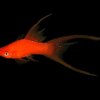To provide the best experiences, we use technologies like cookies to store and/or access device information. Consenting to these technologies will allow us to process data such as browsing behaviour or unique IDs on this site. Not consenting or withdrawing consent, may adversely affect certain features and functions.
The technical storage or access is strictly necessary for the legitimate purpose of enabling the use of a specific service explicitly requested by the subscriber or user, or for the sole purpose of carrying out the transmission of a communication over an electronic communications network.
The technical storage or access is necessary for the legitimate purpose of storing preferences that are not requested by the subscriber or user.
The technical storage or access that is used exclusively for statistical purposes.
The technical storage or access that is used exclusively for anonymous statistical purposes. Without a subpoena, voluntary compliance on the part of your Internet Service Provider, or additional records from a third party, information stored or retrieved for this purpose alone cannot usually be used to identify you.
The technical storage or access is required to create user profiles to send advertising, or to track the user on a website or across several websites for similar marketing purposes.

















Emily Carter (verified owner) –
I recently purchased 10 Green Wagtail Swordtails, and I can’t express how thrilled I am with them! These beautiful freshwater fish have added so much color and life to my aquarium in just a couple of weeks. Their striking green and yellow tails really stand out, especially in my planted tank. I’ve noticed they are very active and social, often swimming around in playful schools.
Having previously kept some other types of swordtails, I can confidently say that these are among the most vibrant and hardy I’ve encountered. The shipping was prompt, and they arrived healthy and ready to explore their new home.
One minor concern I had was their initial shyness, but they quickly adjusted to their surroundings and became curious about everything. I highly recommend these swordtail fish for anyone looking to add some energy and color to their tank. They’re perfect for both beginners and experienced aquarists alike! Overall, I’m so happy with my purchase and can’t wait to watch them thrive.
Emily Carter (verified owner) –
I recently added the 10 Green Wagtail Swordtails to my community aquarium, and I couldn’t be happier! These beautiful freshwater fish not only add a vibrant splash of color with their stunning green tails, but they also have such delightful and playful personalities. After about two weeks, I noticed how well they integrated with my other tropical fish. They’re so easy to care for and really thrive in a well-maintained tank.
I appreciate how these livebearers are generally peaceful and social, which makes them ideal for community setups. Compared to other species I’ve tried, these swordtails seem to adapt more readily and bring a sense of energy to the tank. The shipping was prompt, and they arrived healthy and active, which always puts my mind at ease as a caring fish parent.
The only minor concern is that they can be a bit nippy during feeding time, but that’s just part of their charm! I would highly recommend these for anyone looking to enhance their aquarium’s aesthetics while enjoying the joy of keeping friendly, lively fish. They truly bring happiness to my home!